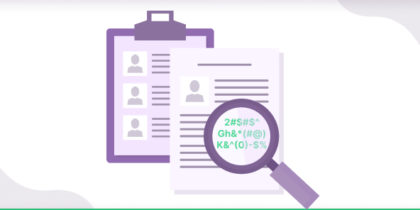In today’s digital workplace, businesses are racing to stay efficient, connected, and agile. Employees often use new tools, apps, or devices to get their work done faster. But what happens when those tools aren’t officially approved by the company’s IT department?
When employees bypass official channels and adopt unapproved technology, they may think they’re helping productivity but they’re actually opening invisible doors for cyber attackers. This unseen world is what experts call Shadow IT in Cybersecurity, and it’s growing faster than many organizations realize.
Recent studies show that over 40 percent of IT spending occurs outside approved budgets, and most companies run hundreds of unsanctioned apps daily without IT’s knowledge. In some cases, 11 percent of data breaches have been traced directly to shadow IT activities. These hidden risks make it one of the most pressing security challenges of the modern workplace.

Defining Shadow IT in Cybersecurity: What is Shadow IT & Why It Matters
Shadow IT in Cybersecurity refers to the use of hardware, software, or cloud services inside an organization without the knowledge or approval of the IT or security teams. It includes any technology used “in the shadows,” such as personal devices, cloud accounts, or applications that aren’t monitored or managed by IT.
Common examples include an employee signing up for a free project management tool without permission, storing company files in a personal Google Drive, or using a personal laptop for work access. Each of these creates invisible security risks.
When an organization loses control over what technology is being used, it loses visibility over data flow, compliance, and cyber hygiene. In short, shadow IT in cybersecurity expands the attack surface and leaves critical gaps where cybercriminals can strike.
Common Examples of Shadow IT in Cybersecurity
Shadow IT appears in everyday tools and habits that seem harmless at first glance. These real-world examples of shadow IT in cybersecurity shows how quickly convenience can turn into vulnerability.
- Teams using Trello, Asana, or Notion without IT approval.
- Employees storing sensitive information in Dropbox or Google Drive personal accounts.
- Developers spinning up cloud servers without security oversight.
- Staff communicating through WhatsApp or personal email to share company data.
These seemingly harmless actions can create data leaks, compliance issues, and security blind spots across an organization.
Root Causes and Business Pressures of Shadow IT in Cybersecurity
To manage shadow IT effectively, organizations must first understand why it happens. Shadow IT in Cybersecurity is rarely about defiance; it’s about meeting real-world needs faster than the system allows.
Why Employees Resort to Shadow IT
There are many reasons employees engage in shadow IT in cybersecurity:
- Speed and convenience: Official IT approval processes can feel slow, leading workers to find their own faster tools.
- Frustration with existing systems: Legacy or complex corporate software may push users toward more intuitive alternatives.
- Hybrid work: Remote and hybrid work cultures have increased reliance on personal devices and unsanctioned apps.
- Easy cloud access: Free trials and pay-as-you-go SaaS platforms make it effortless for anyone to start using new tools.
Each of these drivers comes from a genuine business need. Employees often don’t intend harm, they just want to stay productive.
The Tempting Benefits of Shadow IT
Shadow IT in Cybersecurity persists partly because it offers real short-term benefits:
- Faster access to modern software and features.
- Low or zero-cost tools compared to enterprise solutions.
- More flexibility and innovation without bureaucratic approval.
However, what seems like an easy win for productivity can quickly turn into a costly cybersecurity liability.
The Security and Compliance Risks of Shadow IT in Cybersecurity
Every unmonitored application or device becomes a potential entry point for attackers. To manage Shadow IT in Cybersecurity, organizations must see clearly how these risks develop and multiply.
Visibility and Control Gaps
One of the biggest dangers of shadow IT in cybersecurity is loss of visibility. You can’t protect what you can’t see. When unapproved devices and services operate outside monitoring systems, vulnerabilities go unnoticed. Attackers exploit these blind spots through phishing, misconfigurations, and unpatched software.
Data Loss and Breach Exposure
Sensitive data stored in personal cloud accounts or sent through unsanctioned messaging apps can easily be leaked, lost, or stolen. These uncontrolled platforms rarely meet enterprise-grade encryption or backup standards, making recovery nearly impossible after a breach.
Compliance and Legal Consequences
Regulated industries such as healthcare, finance, and education face additional risks. Using tools outside of compliance frameworks (like GDPR, HIPAA, or PCI DSS) can lead to serious fines and legal exposure. Shadow IT in Cybersecurity often bypasses required audit trails and access logs, making compliance verification difficult.
Hidden Costs and Inefficiency
Beyond security, shadow IT also causes financial waste. Duplicate software subscriptions, inconsistent data sources, and conflicting toolsets slow down teams and create expensive redundancies. What starts as a “free app” often becomes a hidden expense.
How to Manage and Stop Shadow IT in Cybersecurity
Dealing with Shadow IT in Cybersecurity requires balance organizations must protect data without stifling innovation. The goal is to replace secrecy with transparency and fear with collaboration.
Build Visibility and Collaboration
The first step in tackling Shadow IT in Cybersecurity is to find it. Organizations should use discovery tools such as Cloud Access Security Brokers (CASBs), network monitors, or endpoint analytics to identify unapproved tools.
Next, instead of punishing employees, encourage collaboration. Build open communication between IT teams and business units. When workers feel heard, they’re more likely to use approved solutions.
Establish Strong Governance Policies
Create clear policies explaining which types of software or services require IT review and which can be self-approved. Define acceptable use guidelines and risk categories. Keep policies flexible enough to adapt to changing technology while maintaining consistent security standards.
Educate Employees Continuously
Employees are the front line of security. Regular awareness programs should teach why shadow IT in cybersecurity is risky and how to request new tools safely. Promote security as an enabler, not a blocker, of productivity.
A Practical Framework for Control
- Audit and map all shadow applications.
- Assess risk to determine what needs immediate mitigation.
- Develop a review process for new software requests.
- Deploy technology controls such as CASB and endpoint protection.
- Train staff on security best practices.
- Reassess regularly as new apps appear.
Future Trends of Shadow IT in Cybersecurity
Technology never stands still and neither does Shadow IT in Cybersecurity. To stay ahead, organizations must anticipate how new trends like AI, cloud sprawl, and remote work will reshape the threat landscape.
The Rise of AI and Remote Work Risks
The expansion of remote work and artificial intelligence tools has accelerated shadow IT in cybersecurity. Employees increasingly use generative AI apps for quick tasks, often unaware these platforms store prompts and sensitive company data. Reports show that “shadow AI” usage increased by 485 percent between March 2023 and March 2024.
API and Cloud Complexity
Modern applications rely on interconnected APIs and cloud services. Many of these integrations are untracked, creating new attack surfaces. Around 68 percent of organizations have exposed APIs because of poor governance over shadow IT.
The Shift Toward “Governed Allowance”
Forward-thinking organizations are moving away from trying to eliminate shadow IT entirely. Instead, they focus on governed allowance permitting innovation while maintaining oversight. This approach recognizes that a balance between agility and security is more realistic in the modern era.
Reddit and Twitter Insights about Shadow IT in Cybersecurity
it’s helpful to see what real IT professionals and cybersecurity experts are saying online about Shadow IT in Cybersecurity. These community insights show how widespread the problem truly
From Reddit
“Shadow IT is when users go rogue and purchase devices or software without IT knowledge or approval. Usually it’s to solve a business or work problem.” — r/sysadmin
👉 https://www.reddit.com/r/sysadmin/comments/yjdb56/shadow_it/
“Shadow IT is almost always an indication that some business need isn’t being met with current technology.” — r/ITManagers
👉 https://www.reddit.com/r/ITManagers/comments/1hb585c/whats_your_reaction_to_shadow_it/
From Twitter (X)
“You can’t secure what you can’t see. Shadow IT is exploding with SaaS and AI tools being adopted faster than IT can keep up.” — The Hacker News
“Every company fighting cloud sprawl is really fighting shadow IT. Visibility is the new perimeter.” — CybersecurityD
These community insights highlight the everyday tension between business innovation and IT governance showing how widespread and relatable the challenge of shadow IT in cybersecurity has become.
Final Words
Shadow IT in Cybersecurity is no longer a niche concern it’s a mainstream threat that affects organizations of all sizes. Driven by accessibility, convenience, and remote work trends, shadow IT expands unseen vulnerabilities that hackers love to exploit.
But it doesn’t have to be an enemy. By promoting transparency, enforcing smart governance, and embracing collaboration between business and IT, companies can turn shadow IT into an opportunity for innovation within safe boundaries.
The key lies not in controlling people but in enabling them securely. When visibility meets flexibility, Shadow IT in Cybersecurity transforms from a hidden weakness into a managed strength.








